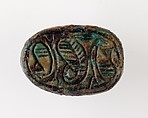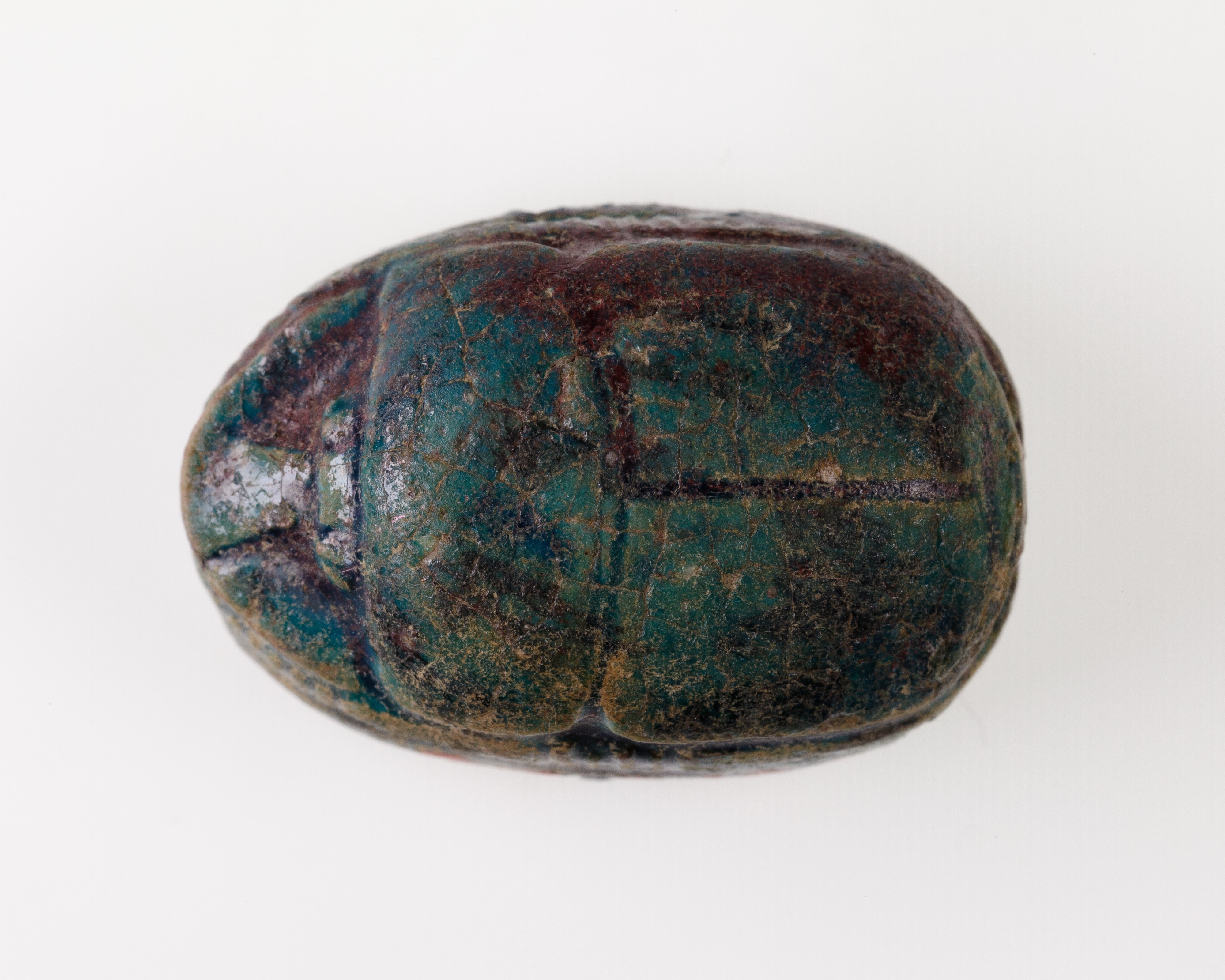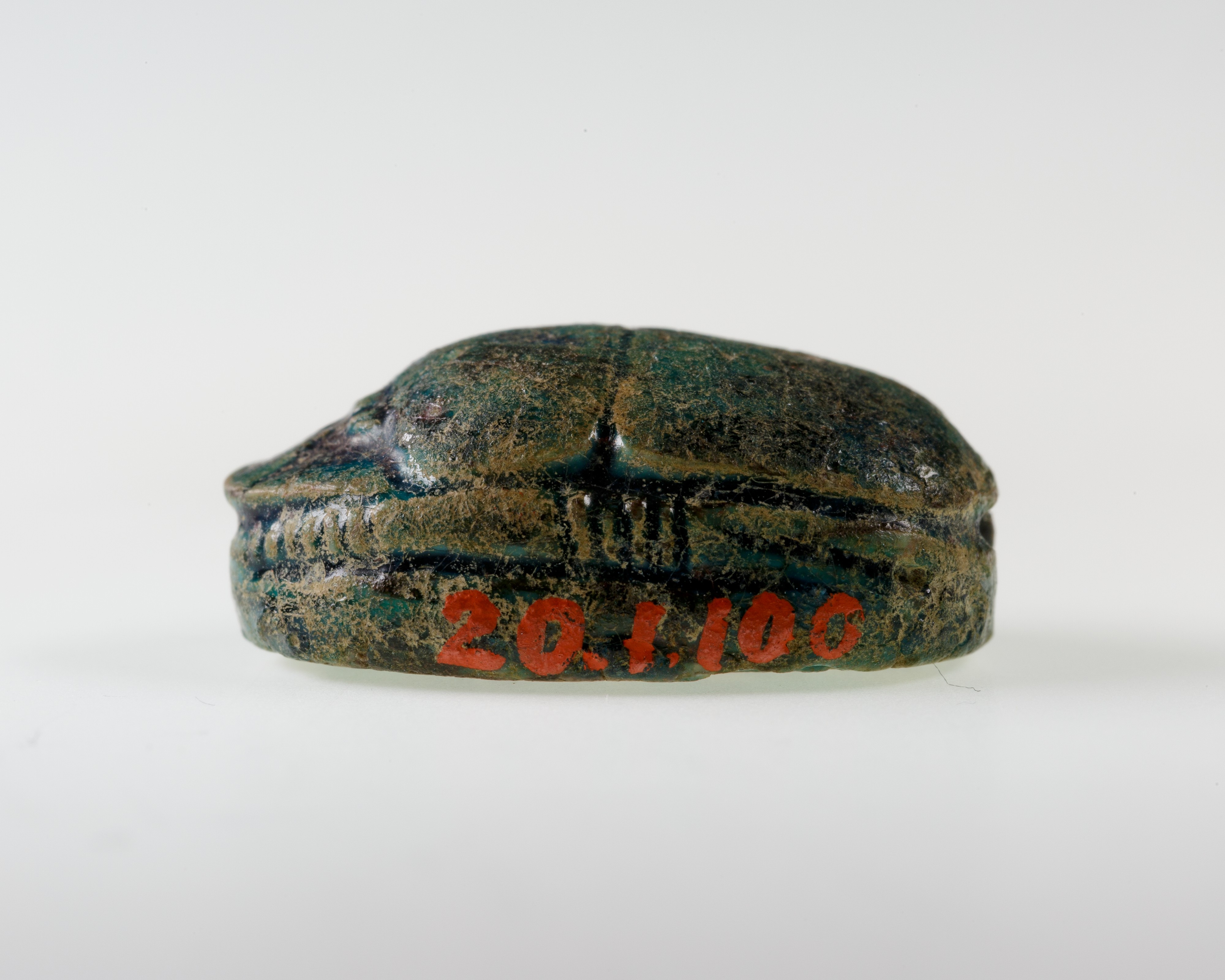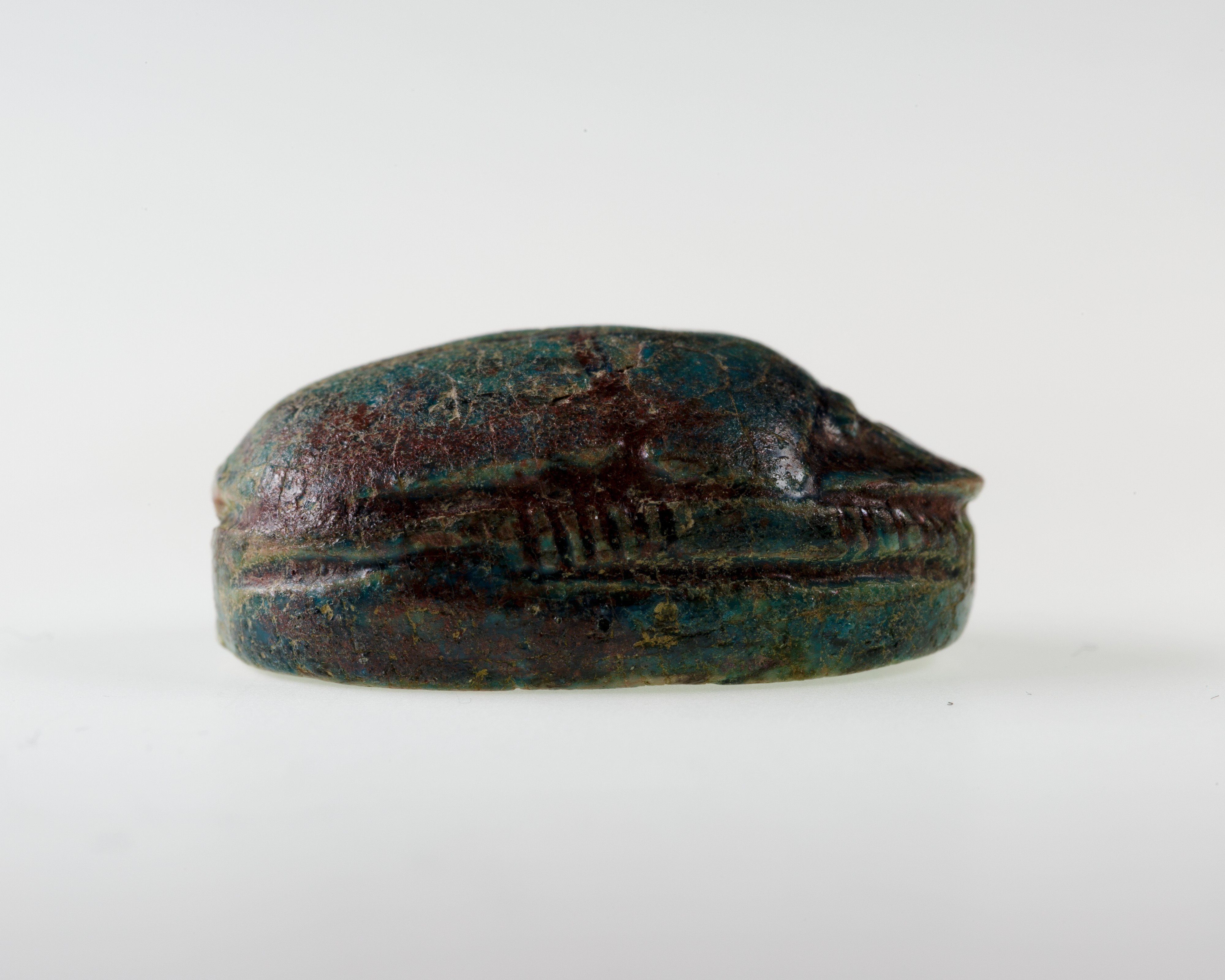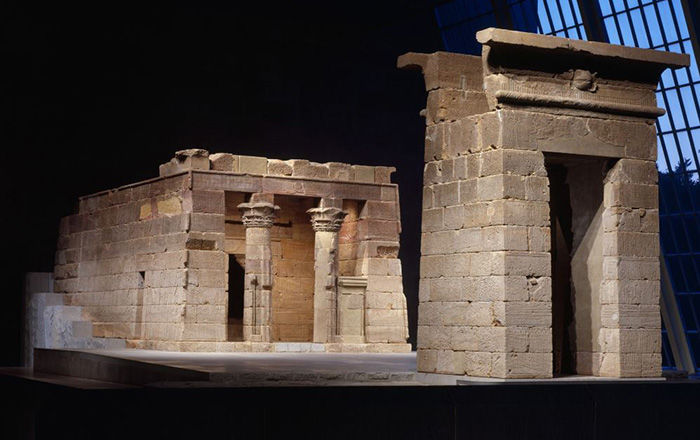Scarab with Uraeus and Papyrus Plants
Middle Kingdom
A large uraeus, its tail curled up behind him and its body decorated with fine hatched lines, dominates the design on the underside of this late Middle Kingdom scarab (late Dynasty 12–13, ca. 1850-1640 B.C.). On either side are papyrus plants, consisting of one straight and one bent stem. They are placed tête-bêche, that is upside down to each other, and parallel lines connect the stems. Plants are a popular theme on Egyptian seal-amulets because they refer to life, renewal, and regeneration, and during the Middle Kingdom they are often paired with other powerful signs. While the papyrus plants are found on seals throughout the Middle Kingdom, the large uraeus is not introduced into the repertoire of motifs until late Dynasty 12 (ca. 1850–1802 B.C.).
This image cannot be enlarged, viewed at full screen, or downloaded.
This artwork is meant to be viewed from right to left. Scroll left to view more.
